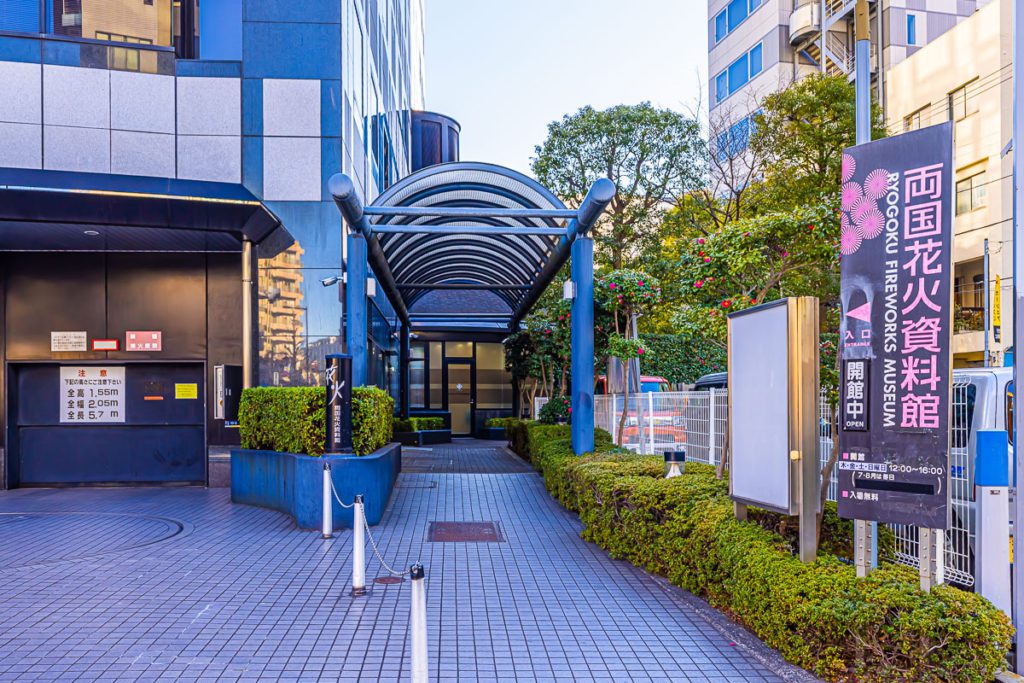The Ryogoku Fireworks Museum, situated in Tokyo’s Sumida Ward, is a unique establishment that celebrates the history and art of Japanese fireworks. This specialized museum provides an insightful look into the cultural significance of fireworks in Japan, showcasing a variety of exhibits and historical artifacts in the famed Ryogoku area, known for its firework displays.
Table of Contents
Location:
The Ryogoku Fireworks Museum, located in Ryogoku, bears the history of Japanese fireworks and reveals where the fireworks festival was originated.
The Ryogoku Fireworks Museum is located on the Sumitomo Realty & Development Building in Ryogoku, Sumida City, Tokyo, Japan, near the main gate of Eko-in Temple. It is only a five-minute walk from Ryogoku Station on the JR Sobu Line through the west exit.
The Ryogoku area is famous for the Ryogoku Kokugikan National Sumo Stadium, Tokyo Edo Museum, Japanese Sword Museum, Eko-in Temple, and Ryogoku Fireworks Museum.
It is also famous for the Sumida Fireworks Festival, held in July, where millions of people gather to enjoy the festival every year.
History:
The Ryogoku Fireworks Museum was built in Ryogoku because most pyrotechnists lived in Ryogoku and displayed fireworks, nowadays called a fireworks festival. Ryogoku is the place where the Fireworks originated.
But the history of fireworks in Japan is not new. Japanese fireworks started in 1549. Guns and gun powders began to become popular in Japan at the same period.
According to history, Tokugawa Ieyasu, the first shogun of the Edo Period, permitted the public to display fireworks for entertainment. He enjoyed watching fireworks and arranged to enjoy himself from his castle.
In addition, in 1733, the eighth shogun of the Tokugawa Shogunate, Yoshimune Tokugawa, arranged a Mizu Kami Matsuri or God of Water Festival to comfort those spirits who had died in a great famine the year before.
Mizu Kami Matsuri was like a present fireworks festival where many fireworks used to be displayed in the Sumida River. Later, the fireworks Festival became a trend of driving evil spirits.
As a result, the Ryogoku Fireworks Museum was built in 1991 to learn about history.
Why famous:
The Ryogoku Fireworks Museum exhibits fireworks materials from the Showa Period(1926-1989) to the present, and such materials are available nowhere else.
1) Photos and Books:
The fireworks museum has excellent photos, brochures, and books held in other times of fireworks festivals from different periods of history.
2) Real Fireworks:
However, most of these materials are related to Showa Period’s fireworks history. Visitors can enjoy the actual fireworks balls, launchers, and Hanten. Hanten is one kind of short-sleeved costume that fireworks artisans wore during the fireworks displays.
Furthermore, the Ryogoku Fireworks Museum has several types of preciousness fireworks materials to exhibit to visitors. But the most impressive fireworks ball is called Nishaku-dama, which is one kind of fireworks ball that looks like a watermelon, which is two feet in diameter and 6 ounces.
This type of firework ball can spread its fire 0.3 miles, which is indeed quite powerful.
3) Schedule of Fireworks:
The Ryogoku Fireworks Museum keeps an accurate fireworks schedule of Japan from where visitors can get enough information about the fireworks festivals of Japan.
Besides, the museum exhibits numerous newspapers on display and a list of Japan’s significant fireworks festivals, including Sumida River Fireworks Festival, Nagaoka Festival Fireworks in Niigata, etc.
4)Learn fireworks from staff:
The staff show videos to visitors on how to make fireworks. The museum also includes the current trend of fireworks in the special audio-visual exhibition.
In addition, postcards with pictures of fireworks are popular as souvenirs.
Admission:
Free
Opening hours:
12:00-16:00
May, Jun.: Sep. Oct.: Thursday, Friday, Saturday & Sunday;
Jul., Aug.: every day
Nov. to Apr.: Thursday, Friday &Saturday
Besides, there are some irregular holidays, depending on the museum authority.
Access:
Nearest Station: Ryogoku Station
Toei Oedo Line/JR Sobu Line
5 minutes walk(west exit)
Address:
2-10-8, Ryogoku, Sumida-ku, Tokyo, 130-0026
Book hotel in Ryogoku:
